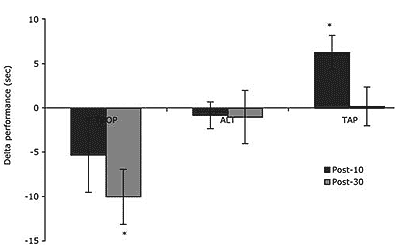Tropen- statt Höhentraining?
Tropical instead of high-altitude training?

Bild/picture: School of Physical Education Swimming Complex Singapore © Felix Gmünder
Von / By Felix K. Gmünder
Schwimmtraining
in den Tropen bedeutet für den Körper eine grosse Belastung
durch Hitze und Luftfeuchtigkeit. Wegen der erhöhten Wasser- und
Lufttemperatur haben die trainierenden Schwimmer Mühe, das thermische
Gleichgewicht zu halten. Dies äussert sich in erhöhten Pulsfrequenzen
und erweiterten Blutgefässen in der Haut. Die Schwimmer sind rasch
"überhitzt".
Zur Leistungssteigerung vor Wettkämpfen werden das Tapering und das Höhentraining verwendet. Weil die Hitze im Tropentraining für den Trainierenden ebenfalls einen zusätzlichen Stress bedeutet wie z.B. die dünnere Luft beim Höhentraining, hat eine Forschungsgruppe aus Guyana die Hypothese aufgestellt, dass Tropentraining im Vorfeld eines Wettkampfes leistungsfördernd sein könnte (Hue et al.: The effect of 8 days of training in tropical environment on performance in neutral climate in swimmers. Int.J.Sports.Med. (2007) 28:48-52).
Das Experiment bestand darin, dass sechs Schwimmer für ein 8-tägiges Training auf 1800 m Höhe und sechs Schwimmer für ein gleichlanges Training in die Tropen auf Meereshöhe geschickt wurden. Zur Kontrolle absolvierten vier Schwimmer eine Taperingphase. Als Leistungstest wurden 400 m Freistil vor und 10 sowie 30 Tage nach der 8-tägigen Trainingsphase wettkampfmässig geschwommen.
Das Ergebnis war, dass die in den Tropen trainierenden Schwimmer 10 bzw. 30 Tage nach der Trainingsphase im Durchschnitt um 5 bzw. 10% schneller schwammen als vorher. Bei der Höhentrainingsgruppe wurden keine signifikanten Unterschiede gefunden. Die Taper-Gruppe schwamm nach 30 Tagen durchschnittlich gleich schnell wie vorher; nach 10 Tagen sogar 7% langsamer (s. Figur 1).
To improve swimming performance at competitions, tapering and high altitude training have been used. Because training in atropical environment also causes extra stress like thin air at high altitude, a research group in Guyana hypothesised that a training period in the tropics will lead to better performance at a competition too (Hue et al.: The effect of 8 days of training in tropical environment on performance in neutral climate in swimmers. Int.J.Sports.Med. (2007) 28:48-52).
The experiment consisted of three groups of swimmers, which prepared in a different way for the test. Six swimmers were assigned to an 8-day long training at high altitude (1800 m), six swimmers were sent for 8 days to a tropical climate at sea level, and four swimmers went through a tapering phase (control group). The test consisted of a 400 m freestyle maximum swimming test before the 8 days training phase and 10 and 30 days later.
The results showed that the tropical group improved by 5 and 10%, 10 and 30 days after the training phase, respectively. The high altitude group did not show any significant differences. The tapering group swam about 7% slower after 10 days and the same speed after 30 days (s. Figure 1).

Die Autoren geben in der Diskussion der Ergebnisse an, dass das Tapering wohl eher eine Ruhephase gewesen sei, nicht ein eigentliches Tapering, was das schlechte Abschneiden der Kontrollgruppe nach 10 Tagen erkläre. Hingegen sei das Training in den Tropen deutlich besser als Höhentraining geeignet, die Leistung im Hinblick auf einen 30 Tage später stattfindenden Wettkampf zu steigern.
The authors say that the tapering phase was actually more of a resting phase, not exactly a tapering phase, which could explain the low success of the tapering. In contrast, training in the tropics was much more successful than high altitude training in view of a competition 30 days later.